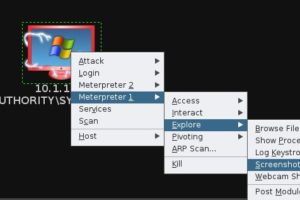In the world of hackers, there are both good and bad. There are also some that are somewhere in-between on the spectrum. While the typical connotation of the word hacker is negative, as most people see them as cybercriminals lurking in the shadows, in reality, the hacker culture isn’t so black and white.
Some hackers do steal data and create havoc, however, there are ethical hackers as well. Ethical hackers use the same tools as criminals but are hired by companies to counter attacks and find vulnerabilities. When you look at the entire rainbow of hacker hat colors, you will find that there are many variations at work in the modern world of technology.
White Hat Hackers: The Good Guys
White hats are typically the good guys and are known as ethical hackers. They help companies remove viruses or act as penetration hackers. They understand how to find vulnerabilities and then create plans to eliminate them before they are compromised. To become a white hat, most individuals are trained in IT security and computer science, with many having degrees in one of these fields. Well-known white hat hackers include Marc Maiffret, Tsutomu Shimomura, and Dr. Charlie Miller.
You must become certified to pursue an ethical hacking career. Certification is obtained through the EC-Council, as a CEH (Certified Ethical Hacker). This requires the individual to take and pass an exam, usually after completion of a CEH prep class. The class you choose should have advanced training related to the 18 most current security domains that offer scenarios for the 270 attack technologies most commonly used by hackers. Hacking will continue to become more complex so to maintain your CEH, annual education credits are required.
White hackers are motivated to use hacking as a career and keep the companies for which they work safely.
Black Hat Hackers: The Bad Guys
These hackers, sometimes known as crackers, are the people that breach vulnerable companies. They exploit weaknesses and find a way in, stealing money, personal information, and other kinds of valuable data. These are the bad guys. And while the media may portray them as criminal masterminds, many of the hacking techniques they use are the most elementary ones learned at the beginning of their hacking career.
Black-hatters are intelligent but don’t rate high on the morality scale. They may be motivated by money, the need for power or they could be seeking revenge. They typically have a low emotional IQ and may display signs of being a sociopath. They think purely of their own gain and have little consideration for others.
Black hat hackers are usually involved in DDoS, identity theft, vandalizing networks, and creating worms to destroy and wreak havoc.
Black hat hackers have been well covered in the media. Some of the most infamous are Kevin Mitnick, who after being caught became a white hat, Vladimir Leonidovich, and Adrian Lamo.
Black hats are motivated by greed and have little consideration for anything else.
Gray Hat Hackers: The In-the-Middle Guys
Very little in life is black or white; hacking is no different. Gray hat hackers are involved with digital theft like stealing money or intellectual property. They may be categorized as those who treat hacking like a hobby. They don’t have the skills of black hats nor do they have the desire to be white hats. They may dabble in minor crimes like file-sharing or cracking software.
Gray hat hackers do not usually go dark. They tend to treat the whole thing as a game. They may, however, try to benefit financially. When they find a vulnerability in a system, they are not likely to notify authorities. Rather, they may offer to fix it for a fee. Gray hats contend they do not infiltrate for malevolent reasons. But not every company will see it that way.
Gray hats are motivated by proving their own importance, seeing themselves as the most elite hackers.
Green Hat Hackers: The Beginners
Green hat hackers are newbies and they are working to improve their skills every day so they can become better. The green hat has something to prove and often gets chided by the hacking community if they ask basic questions. Yet, their desire to learn keeps them asking. They may idolize well-known black hats and are desperate to elevate themselves to the real world of hacking. Even though they lack skills, they can still cause problems. They do not have a clear understanding of the consequences of what they do. That is what makes them so dangerous. Should they cause an issue, they likely will have no idea how to fix it.
Green hats are motivated to prove themselves and hone their skills. They are ambitious in their pursuits.
Red Hats Hackers: The Do-What-They-Want Guys
Red hats are known as the vigilantes of the hacking world. They live and play by their own rules. Like white hats, they do want to halt black hats. However, they go about it in different ways. White hats look for holes and try to build a stronger wall. White hats want to see black hats prosecuted for their crimes. Red hats, in a way, want to do more harm to the black hats. Should a red hat find a malicious hacker, they launch a full-scale attack. They upload viruses, initiate DoSing, and even attempt to access the hacker’s computer to completely annihilate it. They band together with a litany of aggressive methods to completely render the black hat useless and not a threat. Red hats are usually found on the outskirts of the hacking community and often are the most sophisticated hackers of them all.
Red hats are motivated by a desire to end black hat hackers but do not want to play by society’s rules.
Script Kiddies: The In-It-for-Fun Guys
Although not given a hat color, Script Kiddies are part of the hacking community. They are not interested in hacking into networks for nefarious gains. Rather, they want to copy code and then insert it into a virus, SQLi, or other applications. Script Kiddies usually download an overly used software and learn how to use it. They may be involved in a DDoS (Distributed Denial of Service) attack, flooding an IP with useless pings to initiate its collapse and keep other legitimate users from accessing it.
Script kiddies are motivated by boredom and have no real alliance to the hacker world.
Blue Hats Hackers: The Revenge Guys
A blue hat hacker can be malicious but usually, that anger is channeled at one person or company. They seek revenge for some type of wrong. Blue hats are typically new to hacking and may start out as Script Kiddies. An event or incident may turn them from being nonchalant about hacking to being focused on exacting some kind of hacking catastrophe for their target. This group is not necessarily known for wanting to learn or improve their skills. They just want to know enough to retaliate.
Blue hats are motivated by revenge and do not think much of the consequences.
The Hacktivists: The Political Guys
A hacktivist can be considered a sub-group of black hats. They use technology to exact attacks for political reasons. This could be related to a variety of causes like free speech, freedom of information, or proving a conspiracy theory. Hacktivists may work together to expose information or cause problems for a company or organization they see as an enemy. The ideals of hacktivists span the gamut from environmental grievances to revealing scandals to attempts to force political upheaval. Hacktivists have also been known to combat terrorist groups and their use of technology. Many hacktivists see what they do as trying to be a catalyst for positive change in the world. Hacktivists usually operate as groups with Anonymous being one of the most famous of all and still very much active.
Hacktivists are motivated by, and loyal to, their cause.
Interested in Hacking?
If you are currently working or studying programming and IT and have a desire to hack for good, then you can make it a career. The role of the ethical hacker is becoming more important every day. The threat of hacking to both public and private entities is only intensifying. In the last few years, global retailers, government bodies, banks, and even a credit bureau have been victims of hacking, costing billions of dollars and impacting lives around the globe.
Because black hats are becoming a more recognized threat, it is a great time to consider an ethical hacking career. As mentioned earlier, the first step in becoming a white hat is to already have some experience or education and then to work toward CEH designation. Beyond CEH, there is the Computer Hacking Forensic Investigator (CHFI) Certification, awarded by the EC Council. In this role, you would be an investigator, using analysis and techniques to gather legally admissible evidence to prosecute hackers. You would be responsible for finding the trail. CHFI certification is earned through passing an exam, which you can prepare for by taking a CHFI prep class.
There are many more ways to jump-start or elevate your IT career with certifications. Alpine Security offers various classes to help you achieve these certifications. You’ll benefit from an exam pass guarantee and lots of flexibility with both in-person and online classes. Explore all our courses to accelerate your career.





